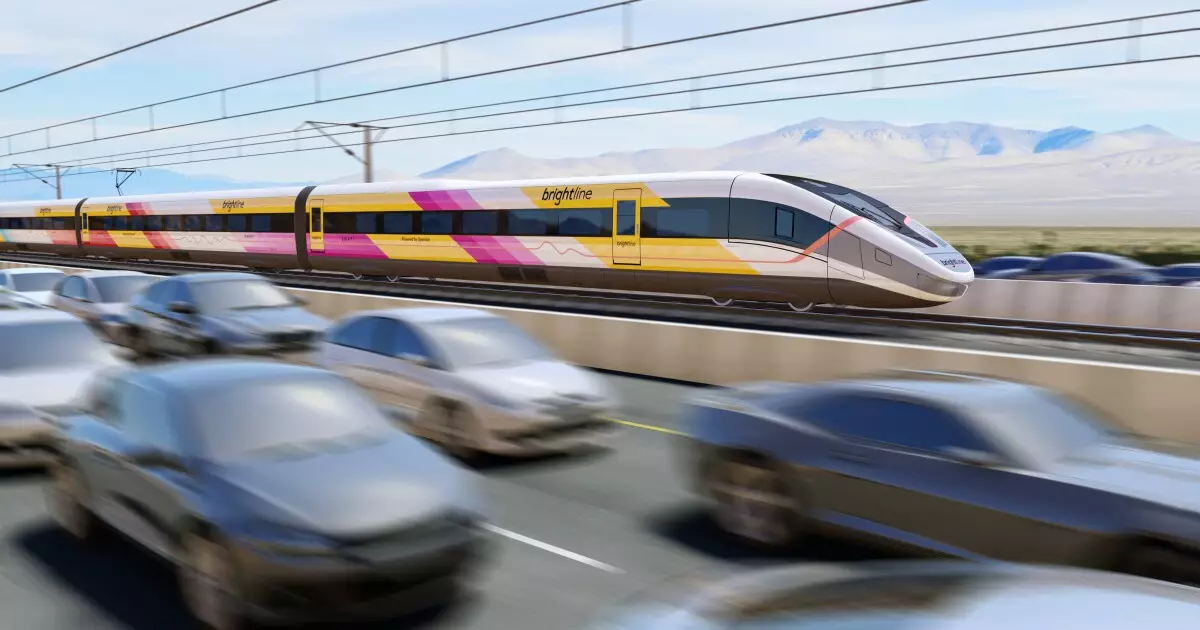The concept of high-speed rail in the United States is advancing with the ambitious plans for Brightline West, an electric train that aims to connect Las Vegas and Southern California. Planned to be a game changer in the realm of transportation, this project represents a significant investment—not just in infrastructure but in the broader goals of sustainability and transit efficiency. With estimated costs hitting $12.4 billion, Brightline West is in the process of securing financing to transform this vision into reality.
To fuel this monumental project, Brightline West is preparing to issue $2.5 billion worth of unrated private activity bonds (PABs). This strategy encompasses not merely the refinancing of earlier bonds but also aims to generate necessary proceeds for ongoing construction activities and establish reserve accounts. The nature of these unrated bonds signifies a certain level of risk, which investors must weigh against the expected high returns that such ventures can offer.
In addition to the PABs, the company has a critical timeline ahead: they must secure a $6 billion bank facility within 180 days following the bond issuance. This financial maneuvering becomes pivotal for the project’s longevity, as it could include a tax-exempt tranche of $1.5 billion. The provision of mandatory redemption at a premium reflects the potential volatility in the project’s financial horizon—a crucial consideration for investors.
Brightline West seeks to revolutionize travel between Las Vegas and Southern California by creating a train that can operate at speeds exceeding 186 mph. This level of efficiency is set to reduce a typical six-hour drive into a mere two-hour journey. The planned 218-mile route is strategically designed to run alongside the I-15 median, thereby minimizing disruption to existing landscapes while maximizing accessibility.
This project’s ambitious timeline aims for the trains to be operational by December 2028. With considerable federal backing—including a $3 billion grant alongside the PAB allocation—the prospects for Brightline West seem promising. However, it invites scrutiny and skepticism given the historical context of large-scale infrastructure projects in California, marked by delays and budget overruns.
Brightline West stands poised as the first privately run, all-electric high-speed rail service in the country, an intriguing prospect for both investors and travelers alike. By June 2031, the company projects that it will cater to 8.6 million passengers, generating a remarkable $1.4 billion in revenue. Such estimates underscore the proposal’s attractiveness—not only as a transportation service but also as an investment potential that appeals to high-yield municipal bond funds and institutional investors.
Amidst the excitement, the market’s competitive landscape remains complex, particularly with existing metropolises vying for investment and logistical support for their own transit projects. The federal administration’s support for a national high-speed rail network, while bolstering Brightline’s relevance, also intensifies competition with other proposed rail lines.
Community and Economic Impact
Beyond logistics and finances, the impact of Brightline West extends deeply into community building and economic development. The introduction of high-speed rail can significantly contribute to local economies by creating jobs, reducing transit times, and encouraging tourism. However, public sentiment is mixed; ongoing debates surround the viability and prioritization of such expansive projects, especially against the backdrop of local criticism toward California’s public transit investments.
As this project progresses, it will be pivotal for Brightline West to maintain transparent communications with stakeholders and communities affected by the construction and eventual operation of the new line. Gaining public support and managing expectations will be key in navigating the challenges that typically accompany large-scale infrastructure endeavors.
Brightline West represents not merely a bold investment into high-speed rail but a microcosmic reflection of America’s ongoing discussions around infrastructure, sustainability, and private versus public investment. As this project embarks on its complex journey from financing to implementation, it holds the potential to redefine travel in the region while also reviving discussions about the future of rail travel across the nation. How Brightline West navigates the road ahead may very well set precedents for similar future endeavors, making it a pivotal case study in American infrastructure development.

